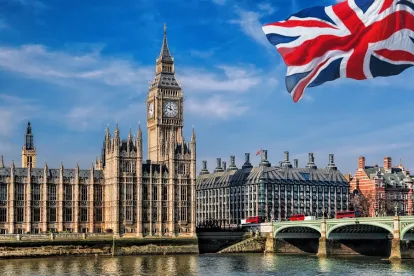The negative economic effects resulting from efforts to mitigate the spread of Coronavirus Disease 2019 (COVID-19) have put financial pressure on many businesses. In the worst such cases, businesses may face the risk of insolvency. In an environmental law context, this raises the question of what the potential implications may be for those businesses’ environmental liabilities - in particular, for businesses that lease premises and who may be responsible for any potential liabilities for contamination caused during the term of their lease.
As between a tenant and a landlord, liability for contamination may arise contractually through provisions in a lease. While such provisions are often heavily negotiated, a typical approach is to allocate liability for pre-existing contamination expressly to the landlord and liability for contamination first arising or exacerbated during the term of the lease to the tenant. For tenants whose use of a property has the potential to be materially contaminative (for example, where the tenant is undertaking an industrial activity), the lease may also provide for the landlord to recover on a full indemnity basis should the landlord suffer losses from contamination caused by that tenant. Where the lease makes no express contractual provision governing contamination the landlord may have to try to obtain recourse using the standard non-environmental provisions (such as repair covenants) in the lease.
However, a tenant’s insolvency has the potential to affect a landlord’s ability to recover under a lease in relation to contamination caused or exacerbated by that tenant, irrespective of the nature of the provisions the landlord may be seeking to reply upon. The landlord can prove damages in an insolvency process. If the liability is discovered much later, and where a corporate tenant has been dissolved and ceased to exist as a legal entity, it is possible for the dissolution to be declared void or for a dissolved company to be, on the application of a person with a potential legal claim against the company, restored to the UK corporate register. Nevertheless, doing so in connection with a claim to recover in relation to contaminated land presupposes that there would be sufficient assets to satisfy the claim once the company is revived. However, given there has been an insolvency, it is highly unlikely that any amounts would remain. As a result, recovering via a contractual claim may offer a low prospect of success for a landlord.
Liability for contamination may also arise under the UK’s contaminated land regime (CLR). Broadly, this regime is based on the ‘polluter pays’ principle, i.e., liability attaches first to the person who caused the contamination. However, liability may attach to non-polluters where the actual polluter cannot be found. Liability may also attach to a person who has knowingly permitted contamination to occur. Both scenarios may, under certain circumstances, including in relation to contamination caused by their current tenants, create liability for landlords. While a landlord may have a contractual right to recover any resulting losses from their tenant, as noted above this may not offer an effective basis for recovery. This may especially be so where the landlord is itself being pursued by a third-party for the costs of remediation on a subsidiary basis where that third-party has been unable to obtain recourse from the tenant as the actual polluter - where, for example, the tenant cannot be “found” for the purposes of the CLR because it has been dissolved.
Under the CLR it is also possible for an otherwise responsible person’s liability for contamination to be transferred to another person via statutory mechanisms. Some of these involve, or are at least assisted by, contractual wording. However, where the person to which responsibility has purportedly been assigned cannot be found (where, for example, it has been dissolved), it is impossible for the relevant regulatory authority to obtain the costs of remediation from them. While this risk may be more relevant in the context of outright property transfers, it may also arise in landlord and tenant relationships. As a result, a landlord may find itself fixed with responsibility for contamination which it had regarded as having been transferred to a tenant.
However, in many cases, the CLR may not actually apply to instances of contamination due to the relatively high threshold built into the regime – broadly, it applies to “significant” occurrences of contamination. In addition, the regime is normally enforced by local authorities and effective enforcement is subject to the budgetary pressures which those authorities now operate under. However, liability for contamination may also arise under a range of common law regimes including torts like nuisance and negligence.
As with the CLR, liability under tortious regimes primarily attaches to the person who actually caused the contamination – in relation to a tenant/landlord relationship, this would be expected to be the tenant in relation to contamination first occurring during the term of the lease. However, under certain circumstances, tortious liability may attach to landlords – where, for example, the landlord, through their conduct, assumes responsibility for the underlying tortious behaviour. This may occur, for example, where a landlord takes control of a property at the end of a lease and fails to address a contaminating occurrence on the property which their tenant first caused.
A landlord may have a contractual right to recover any resulting losses from their tenant, but this is not always, for the reasons set out above, a reliable basis for recovery. In addition, in many leases, the clauses allocating liability for contamination may only expressly refer to the CLR, thereby excluding a contractual claim in relation to liability for contamination under other regimes.
Landlords may take practical steps in efforts to mitigate the risk of liability for contamination caused by tenants who may be financially distressed. For example, landlords may consider:
-
assessing their tenant’s creditworthiness and financial health before deciding whether to enter into tenancy agreement with them;
-
obtaining a guarantee from another person, such as a parent company, for the tenant’s obligations under the lease;
-
putting in place an insurance policy covering environmental risks including those arising from a tenant’s activities; and
-
undertaking periodic inspections of the tenant’s operations so that potential issues may be identified and, where necessary, recourse can be sought.
Steps 3 (insurance) and 4 (periodic inspections) above may be undertaken in relation to existing landlord and tenant relationships. Both are, however, subject to some limitations. In relation to insurance, a landlord may not be able to obtain effective insurance cover for known issues. A landlord may also be required to provide a detailed environmental assessment of the relevant property before an underwriter will be willing to offer coverage. This may pose risks for landlords where an environmental issue is identified which the insurance will then not cover, but which the landlord is later found to be responsible for, either on the basis of (under the CLR) knowingly permitting the issue to occur and/or (under tortious regimes) by assuming responsibility for it. The latter issue may also arise in relation to issues identified during inspections.



 />i
/>i
